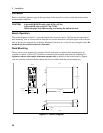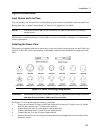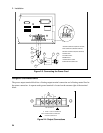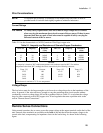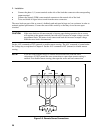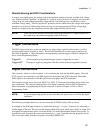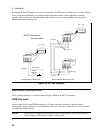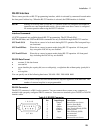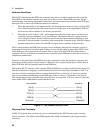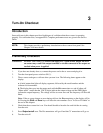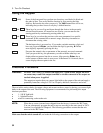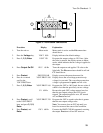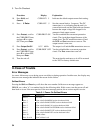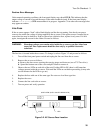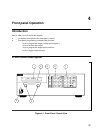
2 - Installation
30
Hardware Handshake
The RS-232 interface uses the DTR (data terminal ready) line as a holdoff signal to the bus controller.
When DTR is true, the bus controller may send data to the ac source. When DTR goes false, the bus
controller must stop sending data within 10 characters, and must not send any more data until DTR goes
true again. The ac source sets DTR false under two conditions.
1. When the input buffer is full (approximately 100 characters have been received), it will set DTR
false. When enough characters have been removed to make space in the input buffer, DTR will
be set to true, unless condition 2 (see below) prevents this.
2. When the ac source wants to "talk", which means that it has processed a query, and has seen a
<newline> message terminator, it will set DTR false. This implies that once a query has been
sent to the power source, the bus controller should read the response before attempting to send
more data. It also means that a <newline> must terminate the command string. After the response
has been output, the ac source will set DTR true again, unless condition #1 prevents this.
The ac source monitors the DSR (data set ready) line to determine when the bus controller is ready to
accept data. It checks this line before each character is sent, and the output is suspended if DSR is false.
When DSR goes true, transmission will resume. The ac source will leave DTR false while output is
suspended. A form of deadlock exists until the bus controller asserts DSR true to allow the ac source to
complete the transmission.
Control-C is the equivalent to the GPIB device clear command. It clears the operation in progress and
discards any pending output. For the control-C character to be recognized by the power source while it
holds DTR false, the bus controller must first set DSR false.
Null modem RS-232 interface cables swap the DTR and DSR lines as shown in the following figure. For
other bus controllers or languages, you must determine what form of hardware handshake is used. You
may have to build a customized cable to connect the holdoff lines as necessary. If your bus controller
does not use hardware handshaking, tie the DSR input to the ac source to a signal that is always true.
This implies that your bus controller must always be ready to accept data. You may want to set the baud
rate to either 2400 or 4800 baud to ensure that this is true.
Figure 2-7. Null Modem Interface Lines
Response Data Terminator
All RS-232 response data sent by the ac source is terminated by the ASCII character pair <carriage
return><newline>. This differs from GPIB response data which is terminated by the single character
<newline>.
TxD (3)
RxD (2)
*DTR (4)
*DSR (6)
Ground (5)
TxD (3)
RxD (2)
DTR (4)
DSR (6)
Ground (5)
bus controller
ac source



